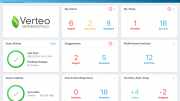Digital Waiting List Validation tools not only cut patient waiting times but also offer additional benefits when executed effectively. Cep Wayment, ex-NHS deputy director and VP of transformation at Healthcare Communications, shares her tips for optimising impact in validation exercises.
With more than seven million patients sitting in the NHS backlog of appointments, it’s critical that clinical capacity is maximised. Through digital waiting list validation, trusts can quickly check if patients still require an appointment. This gives a better understanding of the true size of a trust’s waiting list and is proven to reduce the number of did not attend (DNAs).
But what if a trust has a low mobile capture rate and poor-quality data?
No mobile data? No problem!
Whilst it will take extra effort initially for a trust with low levels of mobile numbers, it is the perfect opportunity for a trust to move to a digital first approach that will significantly reap benefits in the long term.
Trusts such as Cardiff and Vale University Health Board have demonstrated just how successful you can be in encouraging patients to adopt digital communications. The trust took the opportunity to gather mobile data during its waiting list validation exercise and encouraged patients to switch to digital communications.
It achieved this by including a QR code or URL on its paper letters to prompt patients to access the digital form rather than using the postal method. This has helped patients make the switch to digital communications and also had the added benefit of encouraging faster response rates and saving costs. The overall response to this was terrific and contributed to a 21.5% reduction in waiting lists at the health board.
Never leave a patient behind
In the pursuit of accessible healthcare for all, it’s imperative that no patient is left behind, especially when it comes to communication about their health. Patients should have the option to convert information to their preferred language and be offered audio formats if they have visual impairments or literacy challenges. This inclusive approach not only empowers patients by giving them agency over how they receive and process information but also plays a crucial role in reducing DNAs by minimising the risk of misunderstandings around appointments. Equally, it will also ensure that all patients can provide timely updates as to their health status and whether their condition is worsening and requires more immediate intervention.
Don’t fall victim to myths
There’s the perception that older people aren’t able to use digital communications – and while that will be true of some people – the actual number who require paper-based communications is in reality, very low. The pandemic helped enormously to normalise digital communications and the number of those that can’t, or chose not to, communicate digitally is continuing to decrease. But just because a mobile number is held for a patient, don’t assume that this is their preferred method of contact. Their preference should also always be recorded on the patient record.
Routine mobile data capture
Another top tip for NHS trusts is to build in routine mobile data capture. Not all trusts routinely ask patients for their mobile numbers – this has to change. Training reception staff to routinely ask if a mobile number is up-to-date means that the vast majority of patients can be communicated with digitally. This should be combined with regular monitoring of delivery failure reports to quickly identify any incorrect or out of date mobile numbers, with notes added to a patient’s file reminding staff to capture correct details during the next appointment. Operationally, this enables a trust to be much more efficient, from validating waiting lists, to filling last minute cancelled appointment slots and for broadcasting important messages.
As a result of this, Manchester University NHS Foundation Trust (MFT) benefited from a high mobile capture rate of 76% when it came to undertake its waiting list validation. MFT took a digital first approach, with an automatic switch to multi-channel options to reach patients who didn’t want to, or couldn’t, access the digital communication.
This empowered patients by enabling instant engagement through the option to self-select responses at their convenience. This meant they avoided long phone queues and the trust had the benefit of accessing real time data to immediately flag urgent patients for clinical review.
Staff communications
Something that is often overlooked, but which can make a significant difference to the success, or otherwise, of your waiting list validation exercises, is the role of communication. Staff can play a crucial role in supporting your patient communications by validating any patient communications exercise. If your trust is running an SMS or postal campaign, it is vital that staff know about it so that they can confirm the activities if patients ask. Similarly, it is important to advertise the campaign publicly, so that patients know that you will be contacting them, and they can validate any communications as authentic.
Unfortunately, with digital scams commonplace people are often cautious about trusting unprompted communication. Trusts can counter this by using branded text messaging with verified SMS texts that include the hospital logo so that patients know exactly who is contacting them.
Isle of Wight NHS Trust successfully reduced its waiting lists by 12% in just 8 weeks following a successful public education campaign running in conjunction with its waiting list validation. They appreciated how important it was to establish patients’ trust in the SMS process, especially since this was the first of its kind for the organisation. Before go-live, they ran a public-facing communications campaign that included a press release to local media outlets, a news story on its website, and posting on its social media feeds. During the project, the trust received a 70% response rate from patients and as a result was able to safely remove 12% of patients from the waiting list that no longer needed treatment.
Reap the benefits
By implementing these straightforward measures—consistently capturing mobile data, regularly updating information, validating waiting lists, and conducting public and staff communication campaigns alongside list validation—you can substantially boost response rates. This comprehensive approach ensures a clear understanding of patient wait times, effectively reducing DNAs. Ultimately, this optimization maximises clinical capacity, leading to cost savings and an enhanced patient journey.
Read more tips in the Healthcare Communications Playbook: Digitally empowering patients to better health.





